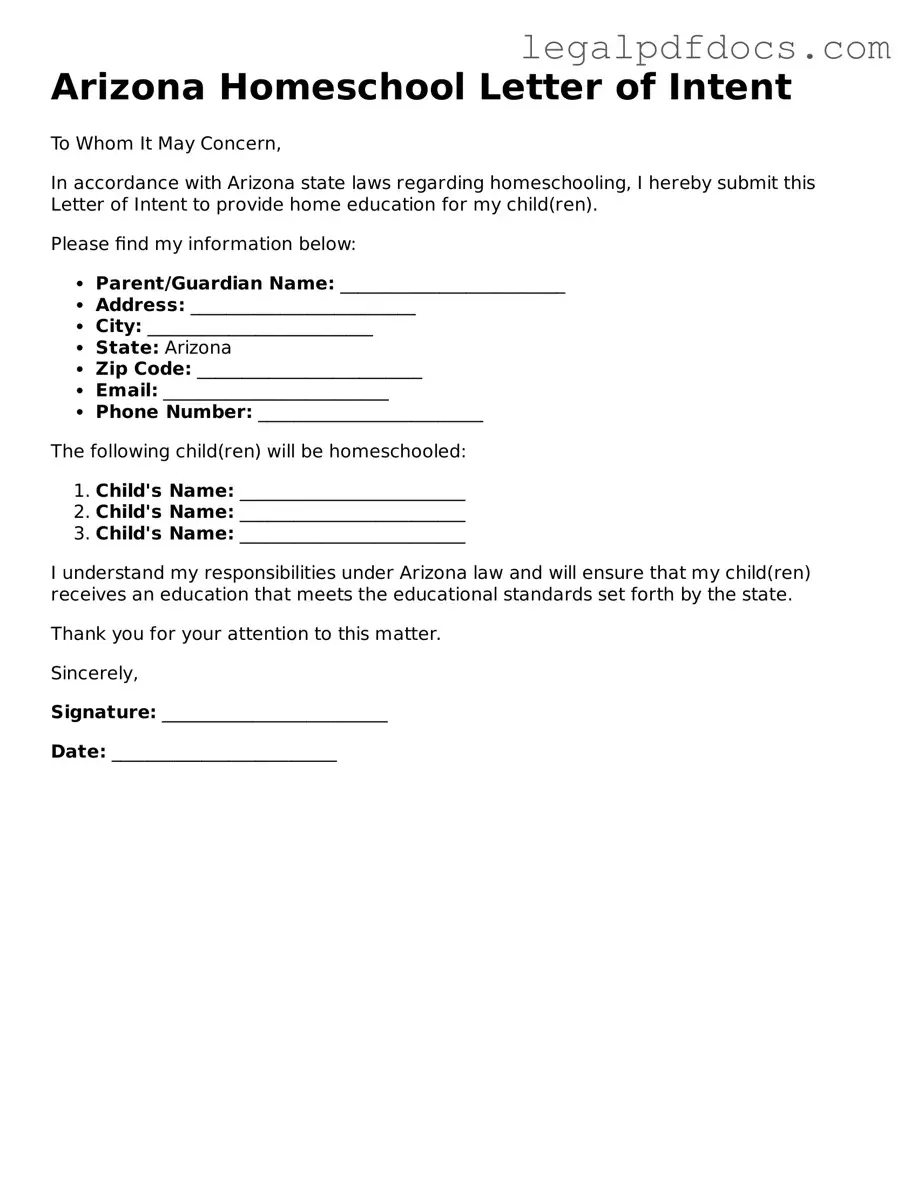In Arizona, families seeking to educate their children at home must navigate a straightforward yet essential requirement: the Homeschool Letter of Intent form. This document serves as the official notification to the local school district that a parent or guardian has chosen to homeschool their child. It is crucial to understand that this form must be submitted within a specific timeframe, ideally at the beginning of the school year or upon withdrawal from a traditional school setting. The letter typically includes vital information such as the child’s name, date of birth, and the educational plan that the family intends to follow. While the process is relatively uncomplicated, it is important to ensure that all necessary details are accurately filled out to avoid any potential issues with compliance. Additionally, parents should be aware of the ongoing responsibilities that come with homeschooling, including record-keeping and assessments, which are not addressed in the form itself but are essential for a successful homeschooling experience. Understanding these aspects will help families embark on their homeschooling journey with confidence and clarity.
